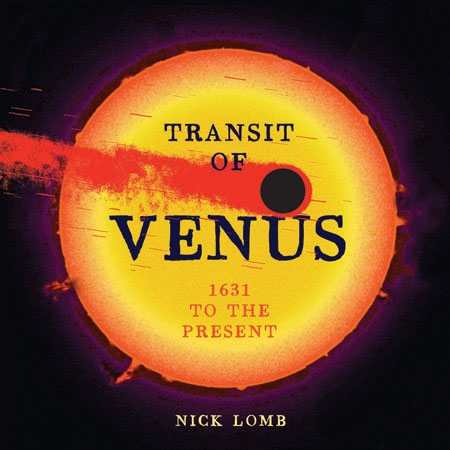Transit of Venus
1631 to the Present
“When the last transit season occurred the intellectual world was awakening from the slumber of ages, and that wondrous scientific activity which has led to our present advanced knowledge was just beginning. What will be the state of science when the next transit season arrives?” June of 2004 must have seemed a very long time away in 1882, when US Naval Observatory astronomer William Harkness made this remark.
Transits of Venus across the sun occur in pairs separated by eight years, with more than a century passing before another. From a scientific point of view, the transit’s greatest significance was its contribution to the calculation of the distance from the Earth to the sun. From a philosophical and historical point of view, to observe tiny Venus against the sun engenders a sense of reverence for the immensity of our universe and admiration for those early explorers so dedicated to furthering our knowledge of it.
Written by Dr. Nick Lomb, astronomer at Sydney Observatory and leader of the observatory’s 2004 transit of Venus team, Transit of Venus is an oversized, graphically interesting collection of facts, figures, maps, photos, and illustrations relating to transits from their earliest recorded observation in 1631. Numerous insets detail such subjects as Finding Longitude, The Photoheliograph, and short biographies of the primary scientists involved.
For history and astronomy buffs, this book will be a welcome summary of the significance of transits across the centuries. For the average curious reader, it will provide a fascinating and thorough introduction.
The grand, difficult, and romantic expeditions of previous centuries to view and record the transits will not be repeated. The transit of 2012 will be at least partially visible from much of the world and just a day’s travel away from the rest. Our sophisticated measurement devices no longer require visual sightings and manual calculations to contribute to understanding the size of our solar system. As Lomb remarks, “[I]n the 1800s the preparations were to carry out serious scientific research during the transit, while in the 21st century the emphasis was on informing the public about the importance and history of the transit and helping people to observe the event.”
While its scientific significance may have diminished, much enthusiasm for observing the transit remains. The next witnesses will be in 2117 and we may very well ask what Harkness did in 1882: What will be the state of science—and indeed the planet itself—when the next transit season arrives?
Dr. Lomb is also the author of Australasian Sky Guide, Astronomy for the Southern Sky, and Observer and Observed.
Reviewed by
Karen Mulvahill
Disclosure: This article is not an endorsement, but a review. The publisher of this book provided free copies of the book to have their book reviewed by a professional reviewer. No fee was paid by the publisher for this review. Foreword Reviews only recommends books that we love. Foreword Magazine, Inc. is disclosing this in accordance with the Federal Trade Commission’s 16 CFR, Part 255.

